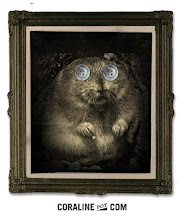While Joan Didion, Truman Capote, and Hunter S. Thompson are all lumped together in the “New Journalism” genre, it strikes me that there is a crucial difference between Thompson and the other authors who are categorized this way. After puzzling over the difference in definition between New Journalism and what was termed as “Gonzo Journalism” I have come to one major distinction. While authors writing in the style of New Journalism alter the facts with bias and opinion, they are still only sharing things from their perspective. Thompson, on the other hand, makes himself the story. His style is more subversive in the sense that while he is covering something like the Kentucky Derby, he somehow manages to predominately cover himself and his experience there, only tangentially touching on the events of the Derby at all. It is this – the difference between an opinionated third person narrative and a striking first person narrative that makes the difference – the difference between the author watching the action and impacting the action.
In “Why I Write”, Joan Didion says: “writing is the act of imposing oneself upon other people, of saying listen to me, see it my way, change your mind. It’s an aggressive, even a hostile act… setting words on paper is the tactic of a secret bully, an invasion, an imposition of the writer’s sensibility on the reader’s most private space” (270). While she says this and certainly infuses her writing with plenty of opinion and things translated through her unique mental filters, her stories are still centered around the event at hand, and not around her.
In contrast, one can look at a piece of Thompson’s writing, and see precious little of whatever event he was supposed to cover. His writing is full of him – not only his first-hand accounts, but tales of how he got in there and changed the course of the events he is writing about. That is what separates him from other authors of New Journalism. One beautiful example of Thompson’s style comes from his article entitled “The Kentucky Derby is Decadent and Depraved” in which Thompson is sent to cover the Kentucky Derby. He manages to do this – barely – but is certain while he is there with Ralph Steadman, they are going to find a bunch of loud, fat, drunk idiots roaming around the place, and in a way, that is exactly what they find. Thompson writes: “There he was, by God – a puffy, drink-ravaged, disease-ridden caricature… like an awful cartoon version of an old snapshot in some once-proud mother’s family photo album. It was the face we’d been looking for – and it was, of course, my own. Horrible…”
In Capote’s In Cold Blood, the reader is given a fairly factual portrayal of what happens to the Clutter family, but it is written in such a way that makes the “truth” of the matter very subjective. Much of the story is infused with Capote’s opinions and beliefs, but he is not a direct part of the action of the story. He is not a character in the story, whereas with Thompson and Gonzo literature, Thompson himself is the character in the story.
Many literary scholars have said that New Journalism was the act of turning journalism into art. If we follow that path, I would say what distinguishes Gonzo Journalism is this - New Journalism turns journalism into art, Gonzo Journalism turns art into beautiful hallucinations of art that punch you in the jaw.
While Gonzo may be a subcategory of the label called New Journalism, I will forever hold that it can and should stand on its own. For me, this style is far more powerful, more creative, more genius in equal proportion to how much more deranged it is.
Monday, March 9, 2009
Subscribe to:
Comments (Atom)
